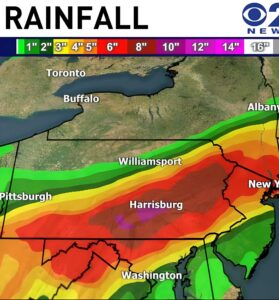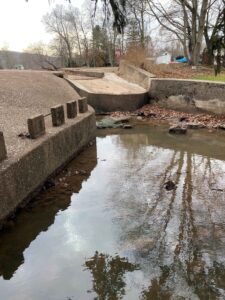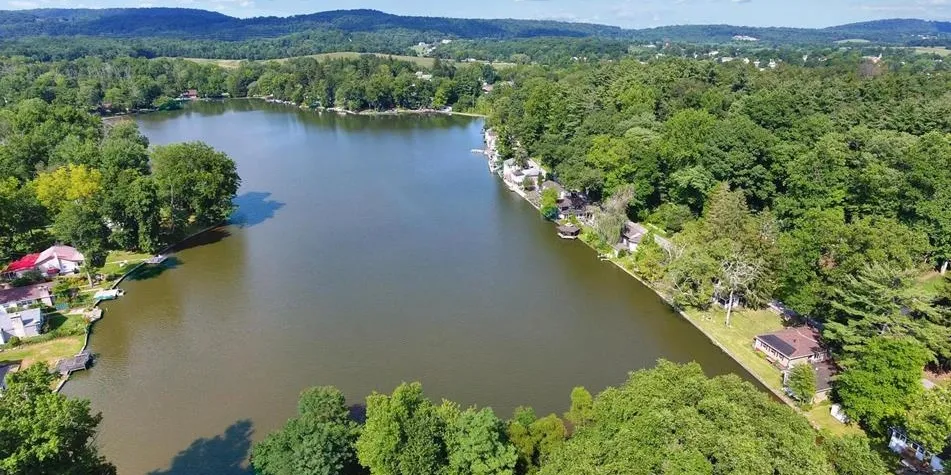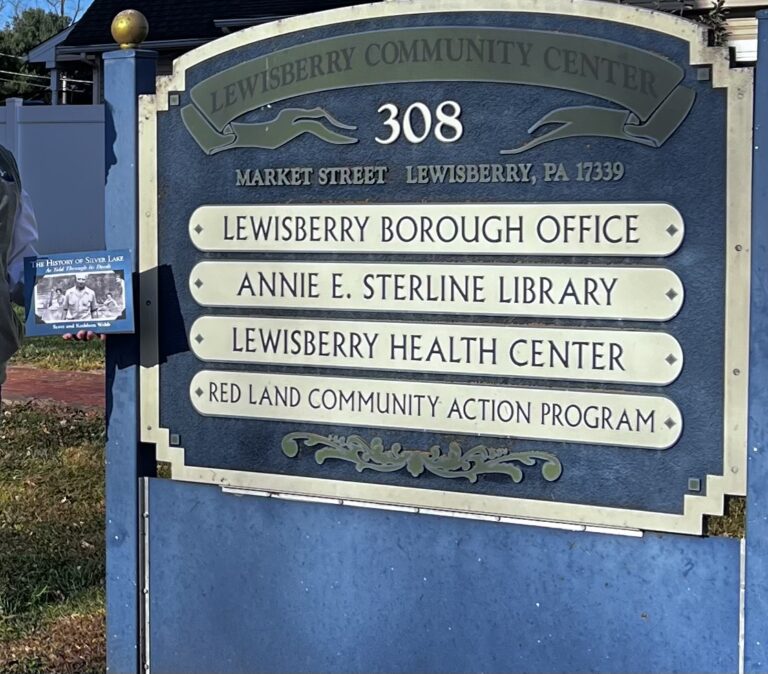On August 31, 2021, a CBS affiliate issued a rainfall forecast map that used the rarely seen “purple” shading to indicate 10-12 inches of rain predicted for northern York County, including the Moores Mountain basin and Silver Lake in Lewisberry. As forecasted, on September 1-2, 2021, the remnants of Hurricane Ida hit York County, Pennsylvania, causing widespread devastation. Torrential rainfall, with some areas receiving over eight inches, caused rivers, creeks, and streams to swell rapidly, resulting in severe flooding. Roads became impassable, homes were inundated, and businesses were forced to close as flash floods swept through low-lying areas. Emergency services were overwhelmed, responding to numerous evacuations and water rescues. Fallen trees and downed power lines created additional hazards, leaving thousands without electricity, while schools and businesses remained closed, further complicating recovery efforts.

In the aftermath of the storm, emergency responders, local agencies, and volunteers worked to clear debris, restore power, and assist displaced residents. One of the most vulnerable areas was Silver Lake. Over its 238-year history, the surrounding land has shifted from farmland and forests to residential developments, significantly altering water flow into the lake. Modern infrastructure—gutters, drains, and roads—now accelerates stormwater runoff, causing the lake to rise more quickly. During Hurricane Ida, this led to an 11-inch rise in the 22-acre lake as runoff surged into it.
For the first time in recorded history, Silver Lake’s earthen dam was overtopped. Earthen dams, made from compacted soil and clay, are vulnerable to erosion when overtopped, increasing the risk of failure. As water flows over the dam, it erodes the structure’s downstream face, weakening its stability and posing a serious threat to the surrounding area.

The Pennsylvania Department of Environmental Protection (PA-DEP) has designated the Silver Lake dam as a High-Hazard Dam. A breach could result in loss of life and property damage downstream. Although a breach at Silver Lake would not cause a catastrophic deluge like the infamous Johnstown Flood, the release of water and mud would still be dangerous. Even just a few inches of fast-moving water can sweep away vehicles, knock people off their feet, and cause widespread damage.

Silver Lake relies on a spillway system to regulate water levels and direct excess water downstream. The current spillway, built in the early 1960s, is designed to handle most heavy rainstorms, guiding water over the crest and down the concrete “S”-shaped structure on the downstream side, dispersing energy efficiently. However, despite improvements made over the years, the system was overwhelmed by the intense rainfall from Hurricane Ida. Excess water bypassed the spillway and overtopped the dam, creating a hazardous situation for nearby residents.
The overtopping of Silver Lake’s dam put lives and property at risk, particularly for those near Lewisberry. Emergency responders rescued people from rising floodwaters, avoiding a greater disaster. While the dam held, the event highlighted the vulnerability of infrastructure during extreme weather events and the importance of maintaining critical structures like the Silver Lake dam.

Hurricane Ida served as a stark reminder of the dual nature of the natural world—its beauty and serenity can quickly give way to devastation. For York County, the storm tested the resilience of its people and exposed the vulnerabilities in the region’s infrastructure. The event highlighted the critical importance of maintaining and managing essential structures, like Silver Lake’s earthen dam, to protect communities from the ever-increasing threat of extreme weather events. Silver Lake and its governing authority, the SLCA, are working in cooperation with the Pennsylvania Department of Environmental Protection to make structural improvements to the lake’s dams and spillways to preserve the lake and, perhaps more importantly, protect the lives and homes of people living in the lake’s inundation zone.






